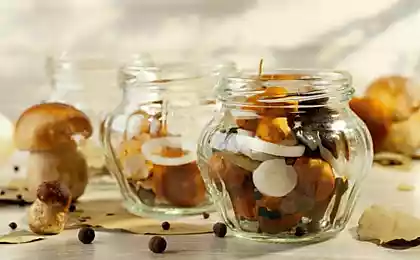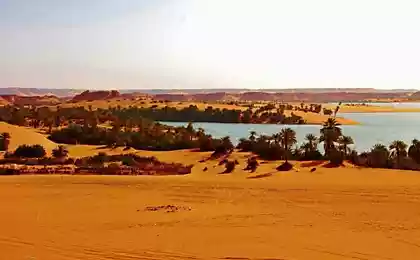504
Salty facts
Interesting historical "salted" observation. Until the 20th century salt sticks called amoleh (Amole) have a legal means of payment for goods in Abyssinia (now - Ethiopia).
In Bolivia, there is an unusual plain Salar de Uyuni, covered with a thick layer of salt. Her area of over 12,000 square kilometers, and at certain times it is covered with a thin layer of moisture turning into a huge mirror (see. Photo). It's her property is used to configure optical equipment on satellites. Yet this plain is a rich source of lithium (more than half the world's supply).
Salt is necessary for our body so that if you drink enough water, you can get sick hyponatremia (Hyponatremia). Because of this dead one of the participants of the contest «Hold your wee for a wii» Jennifer Strange (Jennifer Strange), in which it was necessary to drink plenty of water.
On the other hand, an excess of salt in the body is also dangerous - if its amount exceeds one gram per kilogram body weight, the probability of death. This property is a salt used in ancient China for the funeral of suicides among the rich elite, as the salt at the time was very expensive.
Sea salt contains many minerals, especially if it is slightly moist, but not completely dried (such as where you can get? I have only seen dry)
In the Middle Ages salt was so precious that it was called "white gold." The remains of paved roads for transporting salt, are still preserved in Germany, where they are in the city of Lüneburg on the Baltic coast. Ukrainian Chumakov also engaged in this lucrative business.
letters + 4 photos via mindhobby.com

In India, black salt is produced by mixing salt water with plum seeds. After evaporation of black powder remained clots after grinding it becomes pink. (see. the figure)
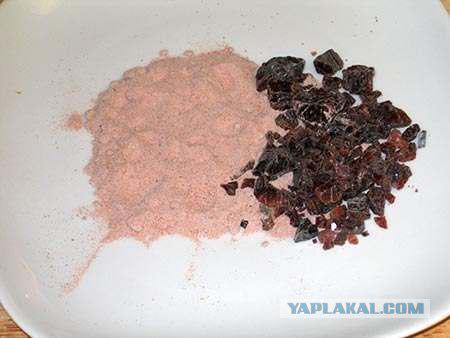
In France, in the town of Guerande, still make salt in the most primitive way - by washing away it from sea water using baskets. The resulting salt because this is very expensive, known as Fleur de Sel (salt flavor). It only added to the ready-made meals, and is never used in the cooking process.
It is believed that Roman soldiers received salaries salt. That's not true, they were paid the usual money and communicate with salt derives from the fact that they were engaged in the protection of trade routes on which salt is delivered in Rome (Salarium).
After cleaning, aviation fuel is forced through the filter to remove salt water residues.
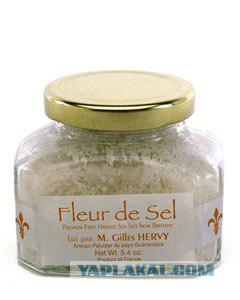
Sodium chloride (salt - see photo) is formed when volatile metal sodium reacts with chlorine. People eat the crushed stones
In the early 19th century, salt was four times more expensive than beef, and is a significant part of turnover.
In the world, only 6% of salt is used for food, and 17% for the treatment of roads in the winter. The remaining 87% is used in industry.
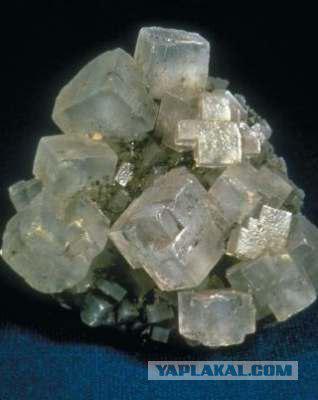
Source:
In Bolivia, there is an unusual plain Salar de Uyuni, covered with a thick layer of salt. Her area of over 12,000 square kilometers, and at certain times it is covered with a thin layer of moisture turning into a huge mirror (see. Photo). It's her property is used to configure optical equipment on satellites. Yet this plain is a rich source of lithium (more than half the world's supply).
Salt is necessary for our body so that if you drink enough water, you can get sick hyponatremia (Hyponatremia). Because of this dead one of the participants of the contest «Hold your wee for a wii» Jennifer Strange (Jennifer Strange), in which it was necessary to drink plenty of water.
On the other hand, an excess of salt in the body is also dangerous - if its amount exceeds one gram per kilogram body weight, the probability of death. This property is a salt used in ancient China for the funeral of suicides among the rich elite, as the salt at the time was very expensive.
Sea salt contains many minerals, especially if it is slightly moist, but not completely dried (such as where you can get? I have only seen dry)
In the Middle Ages salt was so precious that it was called "white gold." The remains of paved roads for transporting salt, are still preserved in Germany, where they are in the city of Lüneburg on the Baltic coast. Ukrainian Chumakov also engaged in this lucrative business.
letters + 4 photos via mindhobby.com

In India, black salt is produced by mixing salt water with plum seeds. After evaporation of black powder remained clots after grinding it becomes pink. (see. the figure)

In France, in the town of Guerande, still make salt in the most primitive way - by washing away it from sea water using baskets. The resulting salt because this is very expensive, known as Fleur de Sel (salt flavor). It only added to the ready-made meals, and is never used in the cooking process.
It is believed that Roman soldiers received salaries salt. That's not true, they were paid the usual money and communicate with salt derives from the fact that they were engaged in the protection of trade routes on which salt is delivered in Rome (Salarium).
After cleaning, aviation fuel is forced through the filter to remove salt water residues.

Sodium chloride (salt - see photo) is formed when volatile metal sodium reacts with chlorine. People eat the crushed stones
In the early 19th century, salt was four times more expensive than beef, and is a significant part of turnover.
In the world, only 6% of salt is used for food, and 17% for the treatment of roads in the winter. The remaining 87% is used in industry.

Source:











